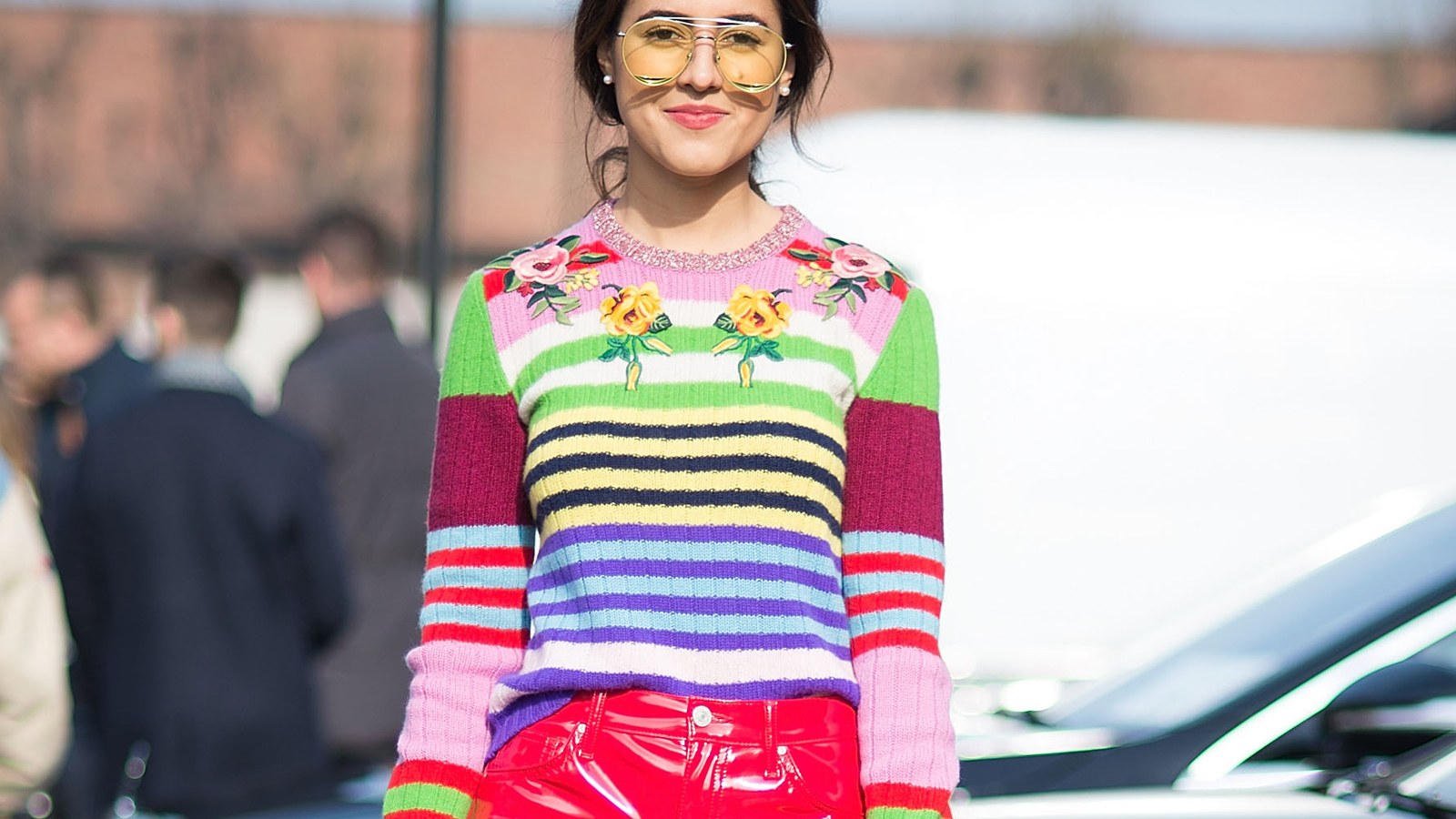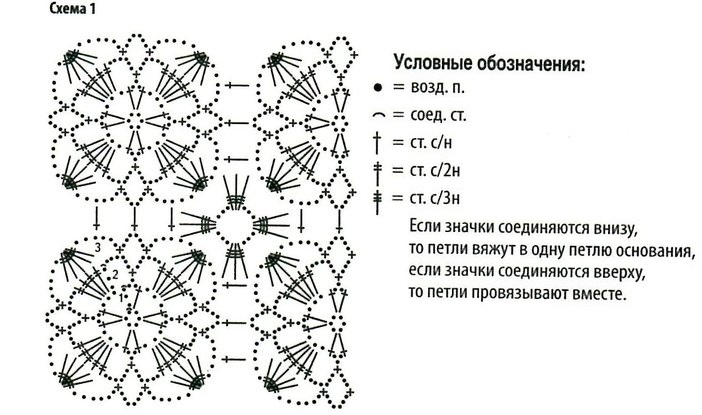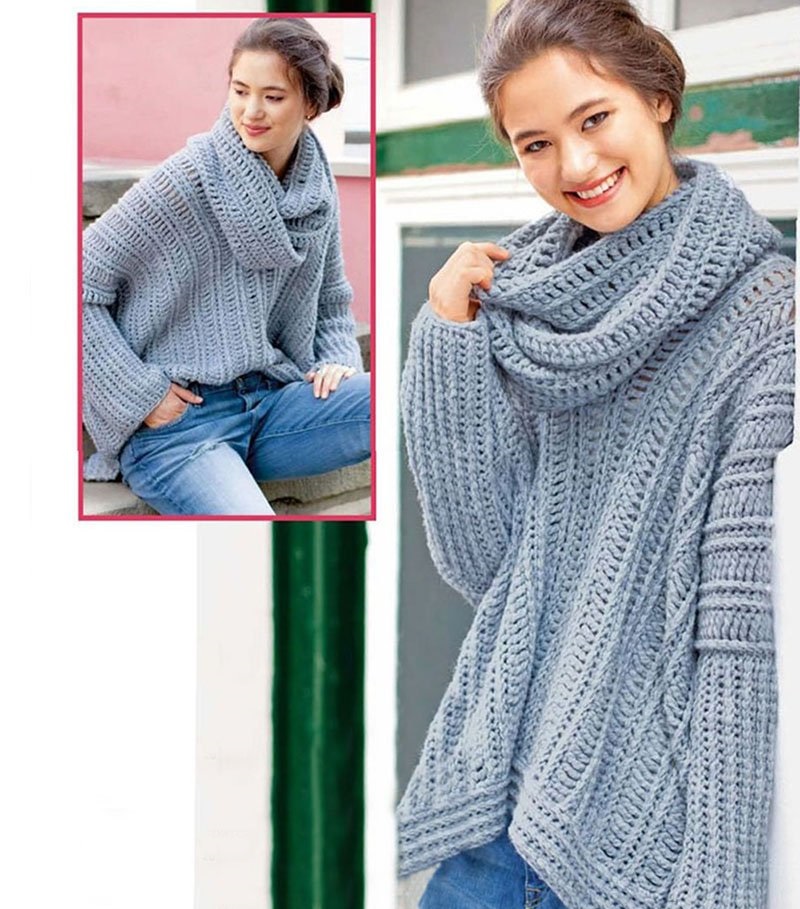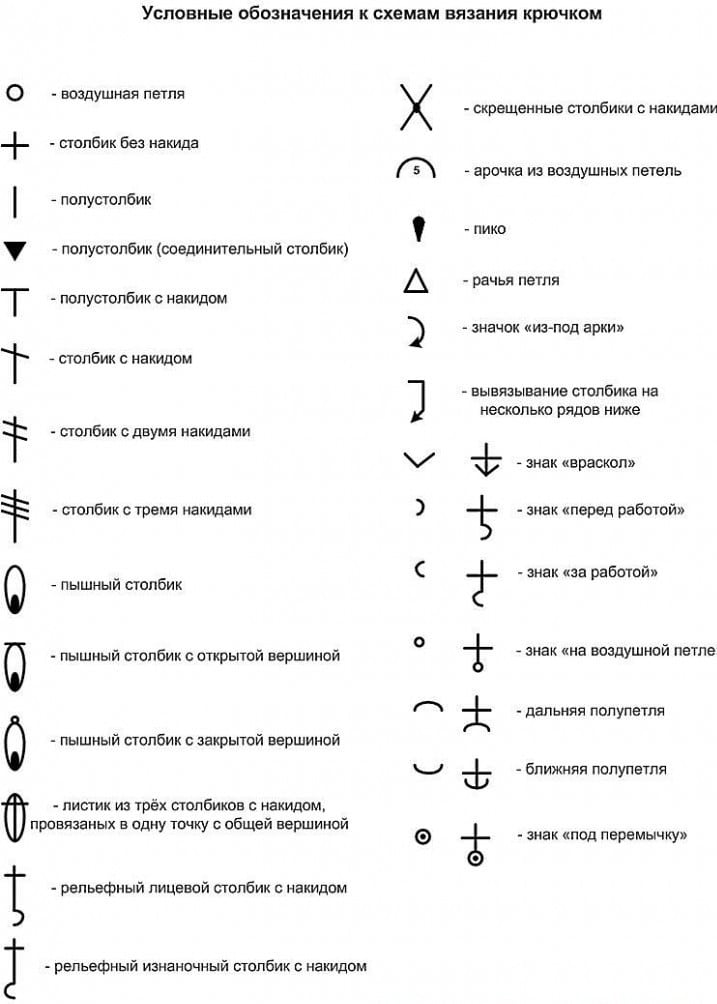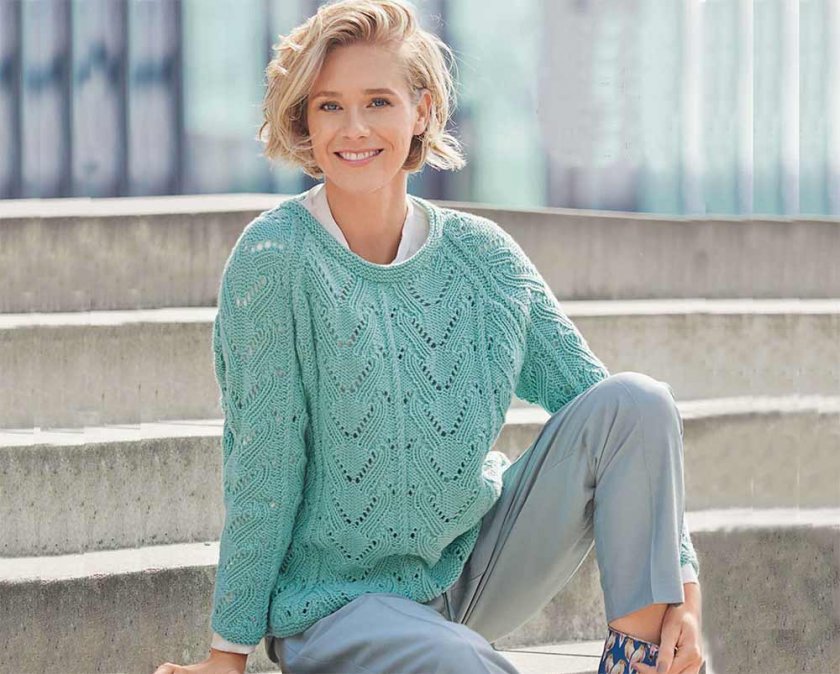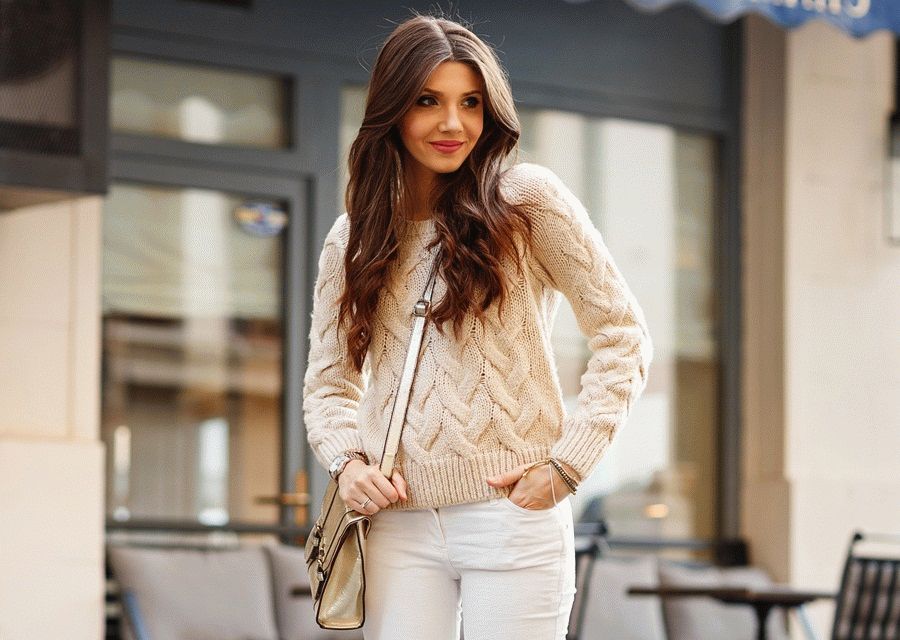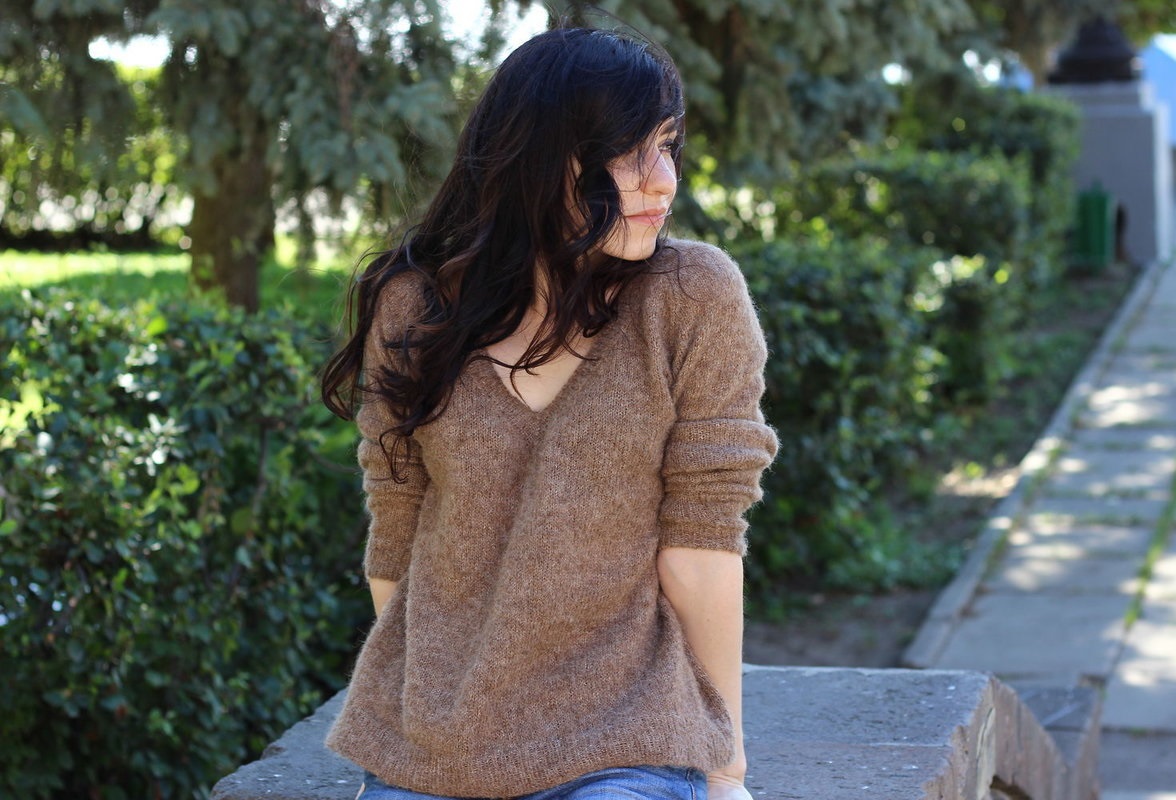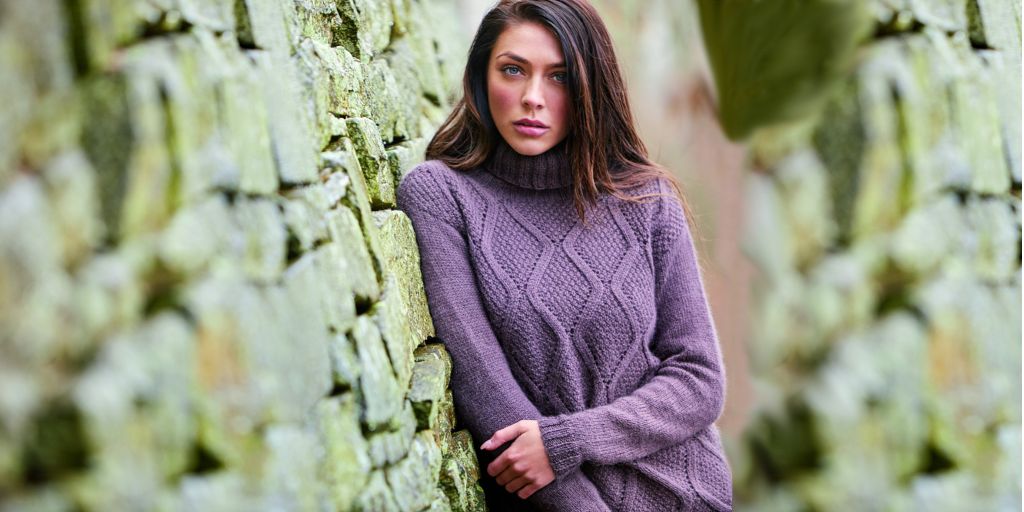Hand-made clothes have not gone out of fashion for many years. Warm and openwork sweaters, jumpers, pullovers surprise with a variety of styles, always remaining relevant and beloved. An original item in a woman's wardrobe can be a crochet sweater for winter or summer. Depending on the model, it will complement any look - sporty or classic, elegant or casual.
Choosing yarn and hook
The yarn for the product should be selected based on the season. Knitted sweaters can be divided into:
- summer (openwork, light);
- demi-season (medium density);
- winter (warm, voluminous).
An openwork jumper for summer is made from thin yarn. It should be noted that pure cotton and linen give a rather stiff fabric, uncomfortable for the skin. Few people wear such things with pleasure. The problem can be solved by using soft mercerized cotton and mixed yarn, which includes synthetic fiber in addition to natural fiber. In addition, a summer crochet sweater can be knitted from:
- microfiber;
- silks;
- bamboo;
- viscose.
For a demi-season crochet pullover, openwork or thick, threads that contain wool and synthetics are well suited. The yarn should be thin (300-400 m / 100 g). An example of well-chosen threads can be considered:
- Pekhorku "Crossbred Brazil" - a mixture of wool and acrylic;
- Color City "Muse" - wool with added flax;
- Color City "Golden Dragonfly", consisting of wool, acrylic and lurex;
- Seam "Alpaca" - alpaca wool plus nylon;
- Nako "Peru Color" is a sectionally dyed semi-woolen yarn.
A voluminous warm sweater for winter is best knitted from wool yarn. A small addition of synthetics is allowed so that the product shrinks less when washed and does not wrinkle. You can take threads with down, such as cashmere, mohair, alpaca, angora. But you need to take into account their pilling - the formation of pellets on the surface of the knitted fabric. When putting on a down sweater, you must avoid its constant friction against outerwear, a bag, the back of a chair, so that the pile does not rub off.
When choosing wool yarn for a high-necked, long-sleeved garment, make sure that the item will not prick exposed skin, causing itching and irritation. Before work, apply the skein to the neck and inner elbow. These are the most vulnerable areas for clothing made of coarse material.
The following types of yarn are well suited for a warm sweater:
- Pekhorka "Elite" - pure merino wool;
- Vita "Alpaca Wool" - wool with alpaca;
- ShveiTorg “Angora Delicate” – angora with polyamide;
- Nako "King Mohair" - mohair plus premium acrylic;
- BBB “Kashmir Baby” – merino and cashmere.
You can get a denser fabric from thin yarn if you knit with 2 or 3 threads.
When choosing the hook number, it is easiest to follow the instructions given on the skein label. If there is no label or it is difficult to read, you can determine the tool number in another way. The notch in its head should exactly match the diameter of the thread. If the yarn will be folded in two or three, the hook should match their total thickness.
Sometimes the size of the tool needs to be selected for a specific knitting technique. If the item should be loose, then the hook should be taken one size larger than recommended by the instructions. For a pronounced openwork pattern, it is better to choose a smaller tool so that the pattern stands out clearly on the canvas.
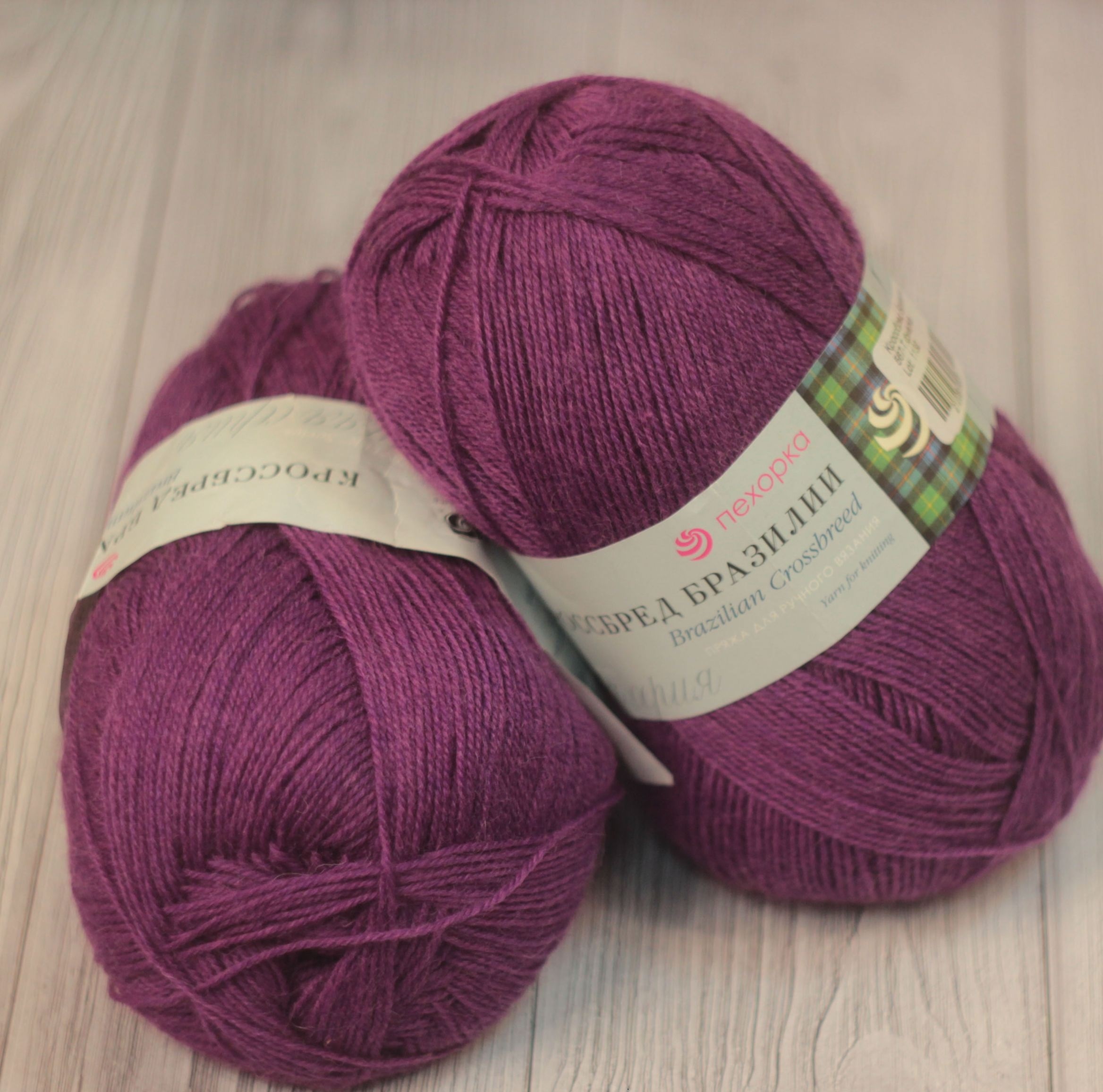






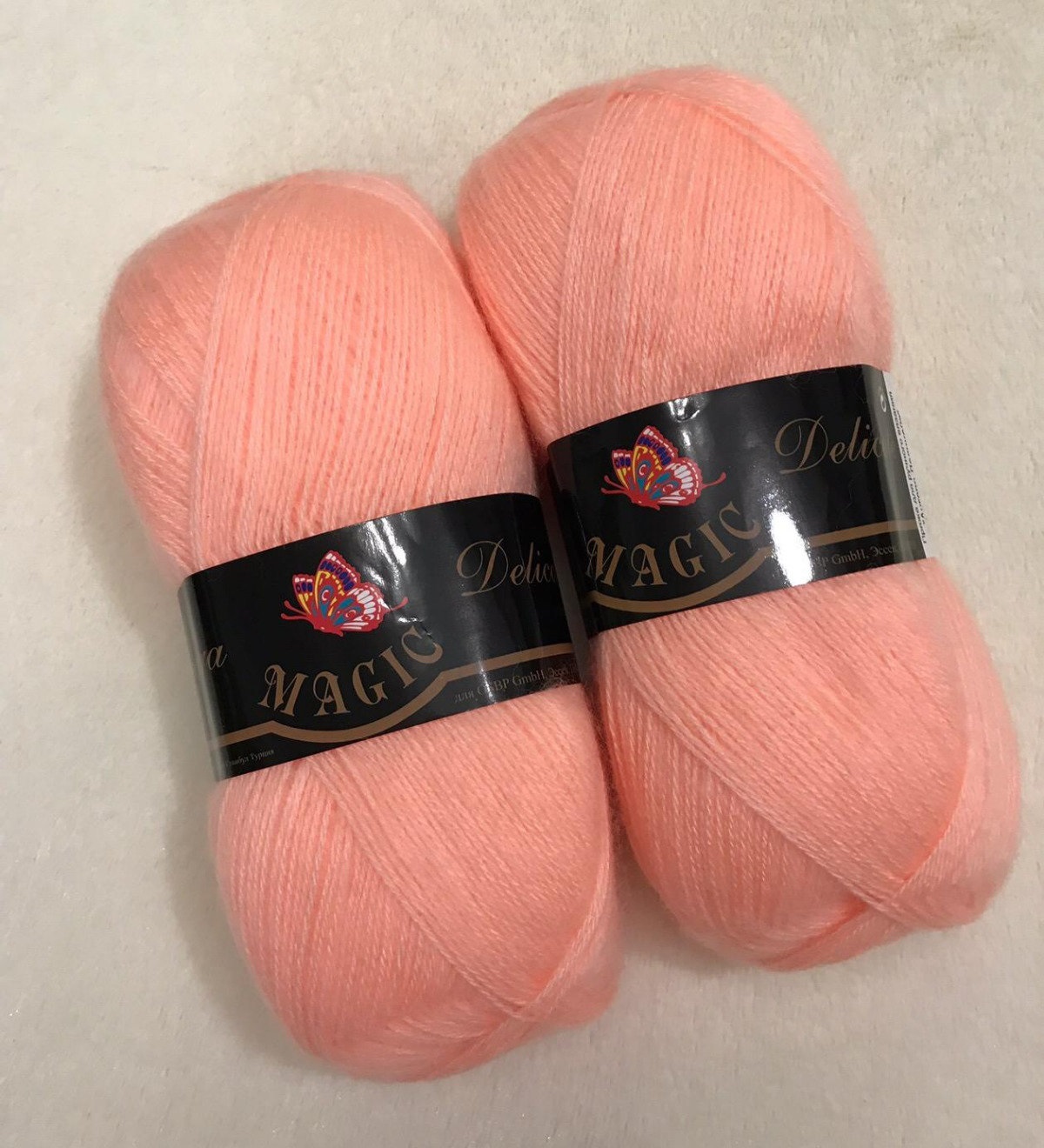

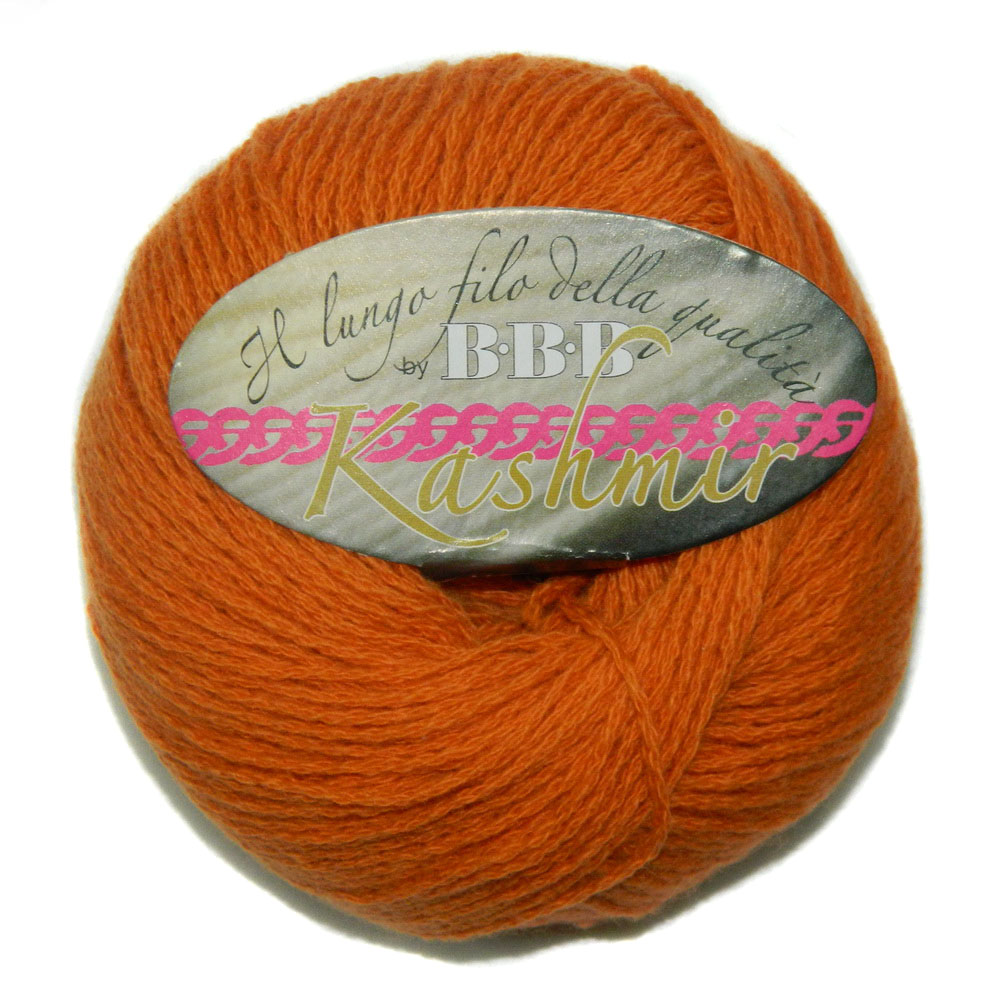
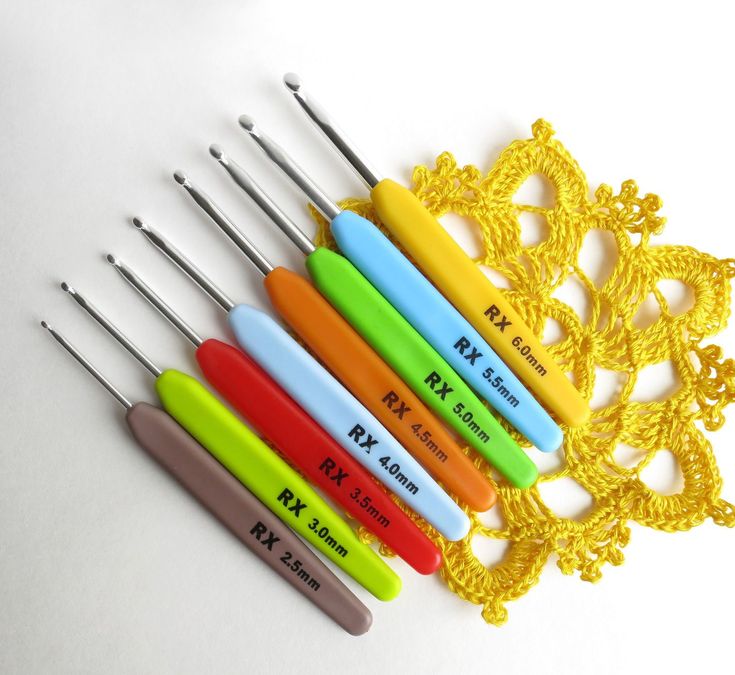
Measurements and calculations
To ensure that your crochet sweater fits perfectly, it is important to take the correct measurements. There are a few things to consider:
- when taking measurements, the measuring tape should fit snugly against the body, without sagging or being stretched;
- the person being measured must stand straight and without straining;
- all symmetrical dimensions (shoulder length, sleeve length) are measured from the right side;
- the measurement accuracy should be 0.5 centimeters;
- If the product is to be worn over a T-shirt or tank top, measurements should be taken in these clothes.
The measurements taken must be recorded on paper and used to adjust the finished pattern. For women's crochet items, the following measurements are required:
- OG (chest circumference). The tape measure runs along the shoulder blades, armpits and the most protruding part of the chest.
- SL (shoulder length). The horizontal line of the shoulder is measured from the base of the neck.
- SL (sleeve length). Measured from the shoulder point through a slightly bent elbow to the wrist. May vary depending on the desired length of the element.
- BBL (back length to bottom). The distance from the base of the neck to the bottom edge of the product. Measured strictly vertically along the back.
Even if the knitting instructions indicate the exact number of stitches to cast on, you need to calculate this number based on the measurements you took. To do this, knit a 10 x 10 cm sample from the selected yarn. Then wash and dry it to allow for shrinkage of the finished sweater. This way, you can accurately determine the number of stitches for all the pattern pieces.
Step-by-step master class on knitting popular models
Following a detailed master class, including a description of the pattern and assembly of the product, you can knit a summer or winter model of a women's sweater. The yarn should be selected based on the weight specified in the manual. The number of loops should be adjusted after taking measurements.
Abbreviations in diagrams:
- VP – air loop;
- ССН – double crochet;
- LP – air lift loop;
- СС2Н – double crochet;
- PST – half-column;
- СС3Н – a column with three yarns;
- CT – column.
Openwork summer jumper made of motifs
The summer jumper is crocheted from thin viscose with a density of 300-350 m/100 g. This model can also be knitted from cotton or microfiber. For work, you will need a hook No. 2.5. Products of different sizes differ from each other only in the number of knitted motifs. The women's jumper according to this pattern is size 42-44, it consists of 146 fragments. The same crochet model for a teenage girl of size 36-38 is made of 120 parts.
Knitting pattern of the motif:
- 6 VP are collected, which are closed into a ring;
- 8 CCHs are knitted into the resulting ring, between which there are 3 VP, the first CCH is replaced by 3 VP;
- 4 VP, 4 CC2N in the arch, 6 VP, 1 PST in the arch, 6 VP, 5 CC2N in the arch, continue to the end of the row;
- Above each group of 5 dc2s, 5 more dc2s are worked, knitted together, between them: 6 ch, 1 pst in the arch, 6 ch, 1 pst in the arch, 6 ch.
The motifs are connected to each other with CCH for the arches of 6 VP as you knit. The spaces between the corners of the motifs are filled with groups of 3СС3Н for the outer connecting CCH, between the groups of 3 VP.
Assembling a summer crochet jumper:
- For the back, you need to form a canvas from 6 x 6 or 7 x 7 motifs.
- The front is knitted in the same way as the back.
- Each sleeve consists of 24 motifs (6 in length, 4 in width).
- The front and back are joined along the shoulder and side seams.
- The sleeves are sewn along the long edge and sewn into the garment.
The edges of the sleeves, the bottom and the neck are tied with the same threads according to the following pattern: 5 sc, above them 3 VP using the “picot” technique - secure the VP in the same place where they began.
Chunky knit voluminous sweater
A warm pullover is crocheted from semi-woolen yarn with a density of 250 m/100 g. For work you need a hook No. 8. All patterns are given for size 42-46 with a knitting density of:
- main pattern - 11 loops x 8 rows = 10 x 10 cm;
- elastic bands - 11.5 loops x 12.5 rows = 10 x 10 cm.
The product consists of three parts: a single piece of fabric for the front part plus the back and two sleeves. All parts are created crosswise.
How to knit the main part:
- start with a set of 15 VP;
- make 1 VP, SC to the end of the row;
- 1 VP, 1 SC, then knit relief SC, clasping the previous SC in front, finish the row with a regular SC;
- 4 VP, then knit CC2H to the end;
- knit as row 2;
- repeat rows 1 through 4.
Having knitted 36 rows, you need to form the neck. It looks like a slit in the fabric. For this, loops from 56 to 83 are not knitted, instead, a chain of 28 VP is made. In the next row, all VP are made according to the pattern. On both sides of the neck, 36 rows should be knitted.
The sleeves are knitted with a rib. To do this, 28 VP are cast on and the 1st and 2nd rows of the main pattern are alternated. The length of the fabric is 45 rows.
The assembly of the model is as follows:
- The main part is folded in half and the middle is marked. The middle of the sleeves is found in the same way.
- Their center is aligned with the middle of the sides of the main part, the elements are sewn from the middle part to the edges.
- Sleeve and side seams are performed.
- The bottom of the elements is tied with sc.
- The bottom of the product is tied with an elastic band 5-10 cm wide.
This warm crochet sweater is recommended for beginner knitters. Simple patterns and assembly steps will not cause difficulties, and the product will turn out spectacular and versatile.
How to read a diagram
To correctly read the diagram, you need to know how the different types of loops are designated in it. Typically, the following signs are used in images:
- dot or circle - air loop;
- arch with a number - a chain of VP; the number indicates their quantity;
- vertical line - single crochet;
- plus - connecting column;
- a long vertical line, the top of which is crossed out one, two, three or more times - a column with 1, 2, 3 or more yarns;
- a vertical line with a hook at the bottom is a relief column.
If the pattern shows only part of the motif or detail, then the crochet should be done symmetrically or repeated in a circle. After studying popular signs, you will be able to make any chosen thing. Patterns make life much easier for knitters, sometimes you don’t even have to refer to the description.
Video

